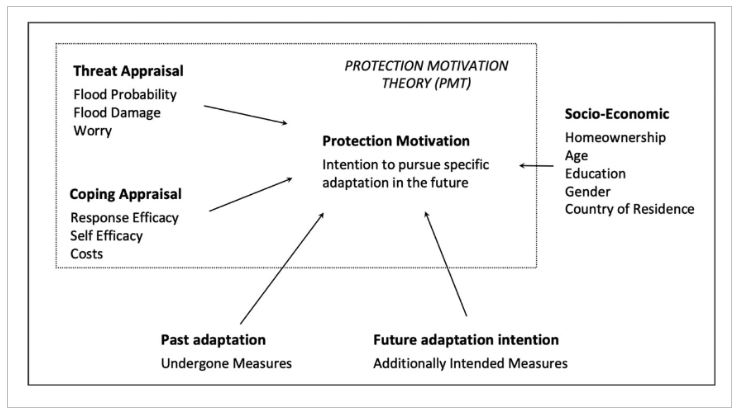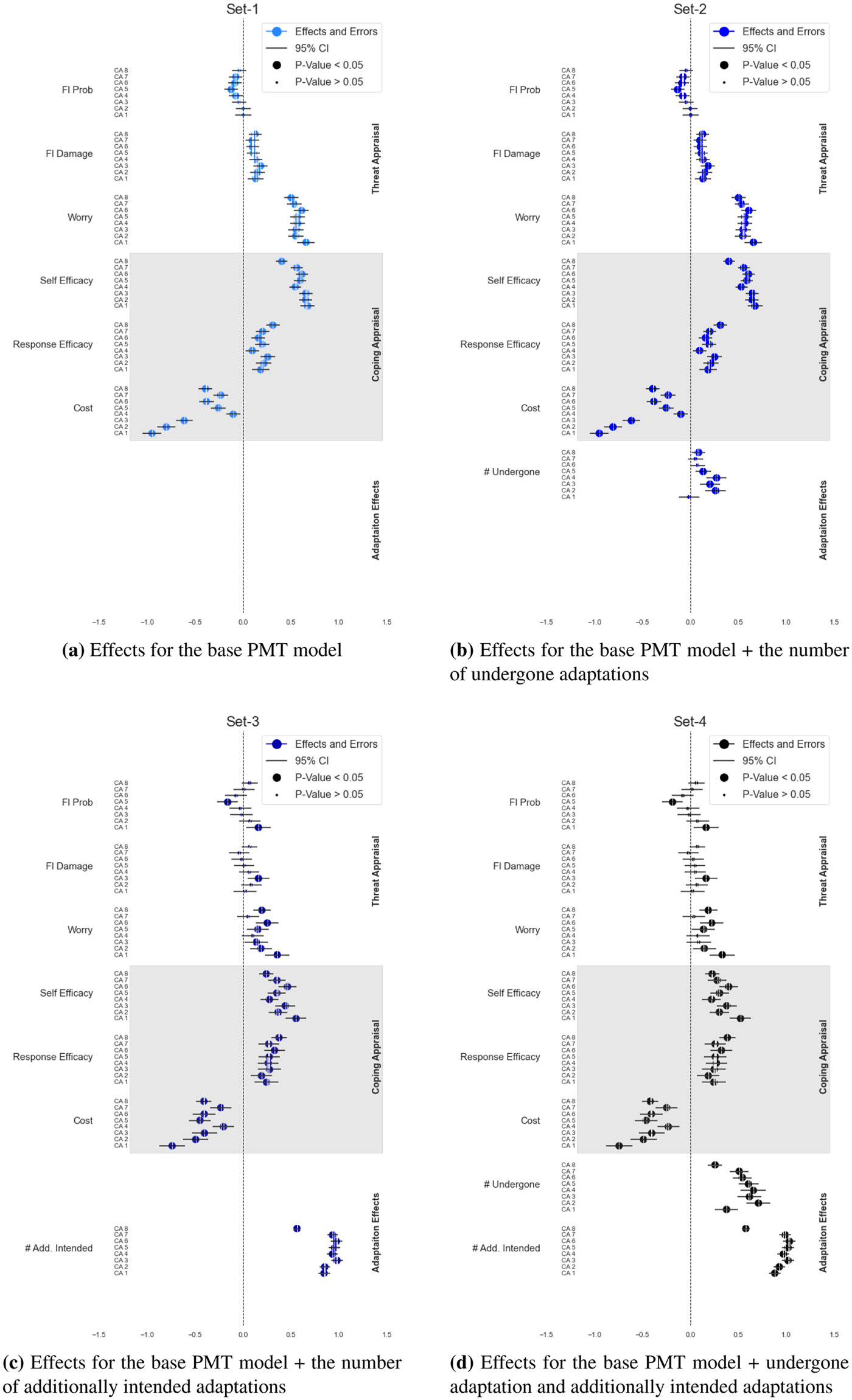Paper
- One and done? Exploring linkages between households’ intended adaptations to climate-induced floods
- Risk Analysis, 2022
- Brayton Noll, Tatiana Filatova, Ariana Need
- https://doi.org/10.1111/risa.13897
Do households consider taking adaptation actions to floods one at a time or in groups? How do (any) adaptation actions that households have taken in the past, influence their present perceptions and intentions? In our persistent pursuit to deepen our understanding of household adaptation behavior, we tackled these two questions in a paper that was published earlier this year in Risk Analysis.
In 2022 alone, there have been several horrific examples of debilitating floods. Pakistani floods, the floods caused by Hurricane Ian in Florida, USA, and the India-Bangladesh floods, all serve as unfortunate reminders that no amount of centralized protection can completely eliminate risk, households must be ready. In 2020 the ERC SCALAR team launched a survey to gain a more robust cross-cultural understanding of how households perceive, are affected by, and adapt to, floods. To read a bit more about the survey, check out our other post here.
Using the first wave of our data in this article we focused on 8 adaptation measures that require structural modifications to one’s home and necessitate substantial time and resource investment. Consequently, we estimated 8 different statistical models testing the effects of variables included in an extended version of Protection Motivation Theory; the most popular theory in explaining the household adaptation literature (see below). Typically, research that estimates household flood adaptation fails to account for the influence that either past action and/or additionally intended measures can have in explaining a household’s stated intention. Put another way, household adaptations are often considered making decisions discretely, and we wanted to explore to what extent this assumption holds.

To study this, we estimated individual (logistic) models for each adaptation measure totaling eight different models. With these eight models we estimated four different model sets, having different explanatory variables in each model sets (visualized below). We estimated a base mode set with a group of explanatory variables that are typically used to estimate adaptation intention (Set-1). We discretely added the number of undergone measures and the number of additionally intended measures in Set-2 and Set-3, respectively. Finally, in Set-4, we have all measures.

In studying how the effects of different variables change as we account for the impact that past actions and additionally intended measures have on influencing the intention of a specific measure, we note several salient points that further unfold our understanding of adaptation intention. We find that adaptations are considered (intended) in groups; possibly due to the economic benefits that result from taking actions in concert. We further note the reduced influence of the threat appraisal variables, especially worry, when past actions and additionally intended measures are correctly accounted for, which highlights the importance of a household’s ability to cope when deciding how to adapt. These findings together suggest that should a households’ capacity to undertake a given measure be improved, for example through subsidies or trainings, a tipping point may be reached in pushing a household from considering only one measure, to several. This finding has substantiative consequences for the speed and scope of household adaption; an essential component to building a flood resilient society. For more details and takeaways, please check out our open access paper in Risk Analysis!
